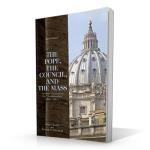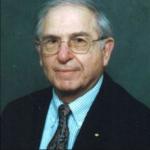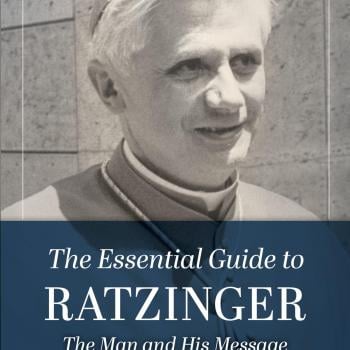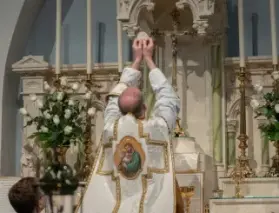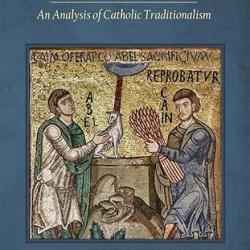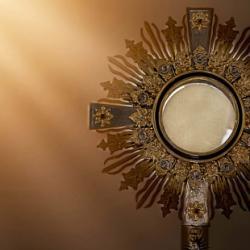Unveiling The Pope, the Council, and the Mass to a New Generation
A book review by Michael Lofton
(This article has been reproduced here with permission from Where Peter Is)
The Pope, The Council, and the Mass by Dr. James Likoudis and Dr. Kenneth D. Whitehead
(Christopher Publishing House, 1981; Rev. Ed. Emmaus Road, 2006)
“[The Council] has invested its teachings with the authority of the supreme ordinary magisterium, which ordinary magisterium is so obviously authentic that it must be accepted with docility and sincerity by all the faithful, according to the mind of the Council as expressed in the nature and aims of the individual documents.”
— Pope St. Paul VI
Sacred Tradition vs Radical Traditionalism
Navigating the often overwhelming and complex debates concerning the Novus Ordo Missae, the Second Vatican Council, and the authority of the pope can be daunting. Yet a singular work stands as an authoritative and comprehensive guide: The Pope, The Council, and the Mass by Dr. James Likoudis and Dr. Kenneth D. Whitehead.[1] This seminal work, meticulously investigates and addresses the array of arguments circulating within what is often termed “Radical Traditionalism” — a form of Catholicism that presents itself as preserving Sacred Tradition and the Apostolic faith but often undermines and contradicts these very tenets in multiple ways.
The authors of The Pope, The Council, and the Mass highlight that Sacred Tradition is inseparable from the Living Magisterium of the Church and must be discerned by the pope and councils to fulfill the Church’s mission. The Magisterium, along with Sacred Tradition, and Sacred Scripture constitutes the foundation of the Catholic Faith, established for the salvation of souls. Indeed, as St. Paul teaches us, it is “the church” which is “the pillar and bulwark of the truth.” (1 Tim 3:15). Scripture and Tradition are thus safeguarded and interpreted within the Church, and cannot be authentically understood or transmitted except through this divinely protected bastion of orthodoxy. St. Paul would balk at attempts to “stand fast and hold to the traditions which you were taught” (2 Thess 2:15) while at the same time discarding the organ that has been designated by Christ to purely facilitate this transmission of faith.
Radical traditionalists thus exhibit a distorted understanding of Sacred Tradition and its identification when equating a particular form of the Roman liturgy or certain longstanding customs with Sacred Tradition and the Apostolic faith itself. Pope St. Paul VI dispelled this misunderstanding explicitly in the 1970s in a letter he wrote to Archbishop Marcel Lefebvre, the original leader of the radical traditionalist movement. The pope wrote,
You say that you are subject to the Church and faithful to tradition by the sole fact that you obey certain norms of the past that were decreed by the predecessor of him to whom God has today conferred the powers given to Peter. That is to say, on this point also, the concept of “tradition” that you invoke is distorted.
Tradition is not a rigid and dead notion, a fact of a certain static sort which at a given moment of history blocks the life of this active organism which is the Church, that is, the mystical body of Christ. It is up to the pope and to councils to exercise judgment in order to discern in the traditions of the Church that which cannot be renounced without infidelity to the Lord and to the Holy Spirit — the deposit of faith — and that which, on the contrary, can and must be adapted to facilitate the prayer and the mission of the Church throughout a variety of times and places, in order better to translate the divine message into the language of today and better to communicate it, without an unwarranted surrender of principles.
Hence tradition is inseparable from the living magisterium of the Church, just as it is inseparable from sacred scripture. “Sacred tradition, sacred scripture and the magisterium of the church. … are so linked and joined together that one of these realities cannot exist without the others, and that all of them together, each in its own way, effectively contribute under the action of the Holy Spirit to the salvation of souls” (Constitution Dei Verbum, 10).
This radical/reactionary group also frequently manifests a vitriolic dissent from the pope’s authority, paradoxically claiming to maintain the traditional view of the papacy. Likoudis and Whitehead engage these common arguments with incisive logic and historical facts, providing an unequivocal rebuttal.
The book’s scholarly depth, coupled with its accessibility to both scholars and laymen alike, has allowed it to emerge as an invaluable resource. With ample citations from the pre- and post-conciliar magisterial documents and addresses, it provides readers with a clearer understanding of the intricate issues surrounding Vatican II, papal authority, and the liturgical reforms, including distinguishing between definitive acts requiring assent of faith and other teachings requiring confident acceptance and sincere application. Its relevance today, especially considering the aggressive dissemination of flawed radical traditionalist arguments on the internet since the Council, remains as strong — if not stronger — than ever.
Papal Authority, Vatican II, and the Novus Ordo Missae
As indicated in the title, the book meticulously examines three key areas: the pope, the Council (Vatican II), and the Mass (the Novus Ordo Missae). Each chapter tackles a specific objection pertaining to these categories, systematically dismantling it with historical context and theological insight.
The Pope
In discussing papal authority, the authors confront numerous issues, including the scope of the pope’s authority over the liturgy — a subject often misinterpreted within radical traditionalist circles. A prevalent misconception is that Pope Pius V’s bull Quo Primum prohibits any Pope from, in the future, modifying the Roman Rite. The book debunks this claim, offering multiple instances where the liturgy was modified prior to the reforms of Pope St. Paul VI, including by Pope Pius V himself — even after his promulgation of Quo Primum — as well as by several of Pope St. Paul VI’s immediate predecessors. It further highlights that the same pope who presented Sacrosanctum Concilium, a modest Vatican II proposal for liturgical reform, also promulgated the Novus Ordo Missae.
Indeed, when the First Vatican Council refuted Conciliarism (the concept that an ecumenical council’s authority is greater than that of the pope), it preemptively affirmed that actions taken by the pope, even those that extend beyond the directives of Sacrosanctum Concilium, are indisputably legitimate. This council, in showcasing the full extent of papal authority, elucidates that the power reserved to the pope, being the fullness of power, can also be delegated, and is as expansive in these cases, as it has been granted. Hence, the validity of a council’s decisions persists until they are explicitly superseded by a papal pronouncement. Since this is the case with papal mandates following Vatican II, the decisions taken by the Consilium (the committee of bishops and theologians chosen by the pope) that produced the Revised Missal also legitimately steward this power delegated by the pope.
Further reinforcing the argument by continuity of authority, between Vatican II and the Novus Ordo Missae, is the fact that many of the bishops who approved Sacrosanctum Concilium were the same ones who later received and embraced the Novus Ordo Missae in the 1967 Synod of Bishops, some offering suggested improvements, but offering their approval nonetheless. The authors of the book highlight this point to demonstrate that such liturgical modifications are not encroachments on Sacred Tradition but rather matters of liturgical discipline, well within the pope’s purview. Therefore, the Second Vatican Council’s recommendations and the Novus Ordo Missae both derive their authority from, and are consistent with, the supreme authority of the pope as emphasized by the First Vatican Council and this consistency is further confirmed by the collegiality (an ecclesiological doctrine outlined in the Dogmatic Constitution on the Church, Lumen Gentium) exercised at Vatican II and at the Synod of ‘67.
The Council
The Second Vatican Council, another central topic discussed in the book, is often perceived by radical traditionalists as a breakaway from Catholic Tradition. A common argument posits that Vatican II, being “merely pastoral,” lacks binding power over Catholics. The authors debunk this misconception, clarifying that the term “pastoral” refers to the Council’s approach to applying eternal truths to contemporary issues. In doing so, it is nevertheless equally binding in its teachings, and Catholics are obliged to accept and adhere to them. As Pope St. Paul VI wrote also, in the same letter to Lefebvre,
Nothing that was decreed in this Council, or in the reforms that we enacted in order to put the Council into effect, is opposed to what the 2,000-year-old tradition of the Church considers as fundamental and immutable. We are the guarantor of this, not in virtue of Our personal qualities but in virtue of the charge which the Lord has conferred upon Us as legitimate successor of Peter, and in virtue of the special assistance that He has promised to Us as well as to Peter: “I have prayed for you that your faith may not fail” (Lk 22:32). The universal episcopate is guarantor with us of this.
Again, you cannot appeal to the distinction between what is dogmatic and what is pastoral to accept certain texts of this Council and to refuse others. Indeed, not everything in the Council requires an assent of the same nature: only what is affirmed by definitive acts as an object of faith or as a truth related to faith requires an assent of faith. But the rest also forms part of the solemn magisterium of the Church to which each member of the faithful owes confident acceptance and a sincere application.
The Mass
The Novus Ordo Missae — the new order of the Mass — is the final major topic in the book. The authors address various objections focused on the changes introduced between the Missal of 1962 produced by Pope St. John XXIII, and the Missal of 1969, promulgated by Pope St. Paul VI. They validate these changes as legitimate and aligned with the faith’s doctrinal integrity.
However, the authors do voice a call for greater reverence in celebrating the Novus Ordo Missae, especially according to the rubrics set forth in the GIRM. (General Instruction of the Roman Missal). They put forth a compelling case for a “reform of the reform” approach to the liturgy, a viewpoint later reflected in Pope Benedict XVI’s Summorum Pontificum (the document allowing greater access to the pre-conciliar missal). This approach seeks to retain the reverence and beauty of the liturgy while acknowledging and respecting legitimate liturgical development, thus balancing the faithful’s need for beauty with their simultaneous need for stability.
Relevance to Today
Since its original publication, The Pope, the Council, and the Mass remains incredibly pertinent, amidst the amplification of misinformation and theological errors by radical traditionalists. The advent of the internet has undoubtedly revolutionized how we share and consume information. While it has democratized access to knowledge, it has also unfortunately paved the way for the rapid diffusion of misinformation — often seemingly more attractive than the truth.
The Catholic Church has not been immune to this phenomenon, and many within its fold grapple with legitimate concerns and find themselves particularly vulnerable. This is where The Pope, the Council, and the Mass shines as an essential guide. Its relevance today is underscored by the fact that it directly addresses the same objections that are still widely circulated. The book serves as a valuable tool for those seeking to disentangle themselves from the slanderous claims about the post-conciliar Catholic Church and the post-conciliar pontificates. Furthermore, it offers invaluable insights to new converts who seek to navigate the internal objections and controversies they are likely to encounter; controversies which, if left unanswered, could potentially lead them into disobedience, schism, or away from their faith entirely.
Undoubtedly though, the landscape of the Church has evolved considerably since the last edition of The Pope, the Council, and the Mass, making an updated version particularly relevant. The pontificate of Benedict XVI, commencing just after the last edition, emphasized a deep respect for liturgical tradition that continues to resonate with many conservative Catholics. More recently, Pope Francis’s Motu Proprio Traditionis Custodes and Apostolic Letter Desiderio Desideravi have ignited fresh discussions on the liturgy and the formation of the faithful, highlighting the need for a guide that helps believers navigate these debates. An updated edition, firmly rooted in the Church’s timeless doctrine, can offer invaluable insights into these developments, further enriching the understanding of readers and strengthening their faith amidst these changes.
A Widely Acclaimed Classic
Both editions of this book have been praised by important figures in the Catholic Church’s recent history. The 1981 first edition was reviewed favorably in L’Osservatore Romano, and was recommended by two Servants of God, Hans Urs von Balthasar and John Hardon, S.J. The former described the book as “excellent and of the greatest utility, [being] clear, moderate, and well-documented,” and the latter affirmed its “doctrinal, historical, and theological soundness.” Hardon also commending the book for the great good it will do for the Church and the authority of the Holy See.
The 2006 revised edition garnered praise from a variety of prominent Catholic theologians and apologists, including Matthew Levering of Mundelein Seminary, who recommended the book for its enduring relevance and timeliness today, especially in response to pertinent questions about criticizing the pope and the response of the faithful to crises in the Church. Timothy O’Malley of the Center for Catholic Liturgy at Notre Dame further emphasized the book’s continued importance in the life of the Church and its role in preserving sanity amidst the liturgy wars. Word on Fire’s Brandon Vogt has lauded the book as the best on the subject, offering fair, faithful, and charitable insights. Catholic Answers’ senior apologist Tim Staples described the book as a valuable resource that helps address arguments raised by traditionalist Catholics, noting its “absolute absence of the invective that we find so often today.”
The Chair of Christology at Sacred Heart Major Seminary (and Where Peter Is contributor), Robert Fastiggi calls The Pope, The Council, and the Mass one of the best responses to the arguments of Catholic traditionalists who maintain that the Missal of St. Paul VI is invalid, illicit, or “gravely injurious” to the life of faith. He has highlighted the great and enduring service this book provides.
Several other Where Peter Is contributors have praised the book as well, including theologian, author, and canon lawyer Dawn Eden Goldstein and site co-founders Mike Lewis and Pedro Gabriel. All three recognize the book’s wisdom, knowledge, and relevance in understanding the history and theological implications of the changes made to the Roman Rite according to the mind of the Second Vatican Council and the Post-conciliar Popes.
A Personal Testimony
The impact of The Pope, The Council, and the Mass is deeply personal, as my own experience attests. Having converted to Catholicism in 2012, I was initially overwhelmed by the complex debates concerning the Novus Ordo Missae, the Second Vatican Council, and the Magisterium — this last topic being the subject of my doctoral studies. Despite having studied the entire Catechism of the Catholic Church, as well as documents of the Councils of Trent and Vatican II in these early years of my conversion, the arguments made within radical traditionalist circles were nonetheless challenging to navigate. Being pulled back and forth between Eastern Orthodoxy and my newly-found Catholic Faith, The Pope, The Council, and the Mass emerged as an illuminating guide, addressing claims such as the assertion that the new mass was reformed by known Freemasons and was thus “Protestant” in nature. Likoudis and Whitehead, refuted this and many other common arguments using primary sources and verifiable facts, providing reassurance and clarity amidst the confusion.
Over the years, the book’s arguments have consistently served as a reliable compass, guiding myself and many others away from the polemics and pitfalls often associated with radical traditionalist circles. Its relevance and applicability have only grown since it was first published, particularly given the virulence and ubiquity of the arguments it refutes on the internet today. I firmly believe that The Pope, The Council, and the Mass remains invaluable for anyone seeking to navigate the complex debates surrounding the Second Vatican Council, the Novus Ordo Missae, and the authority of the pope.
[1] The Pope, The Council, and the Mass (Christopher Publishing House, 1981; Rev. Ed. Emmaus Road, 2006), by Dr. James Likoudis and Dr. Kenneth D. Whitehead can be purchased here: https://stpaulcenter.com/product/the-pope-the-council-and-the-mass/.
Image: Adobe Stock.



